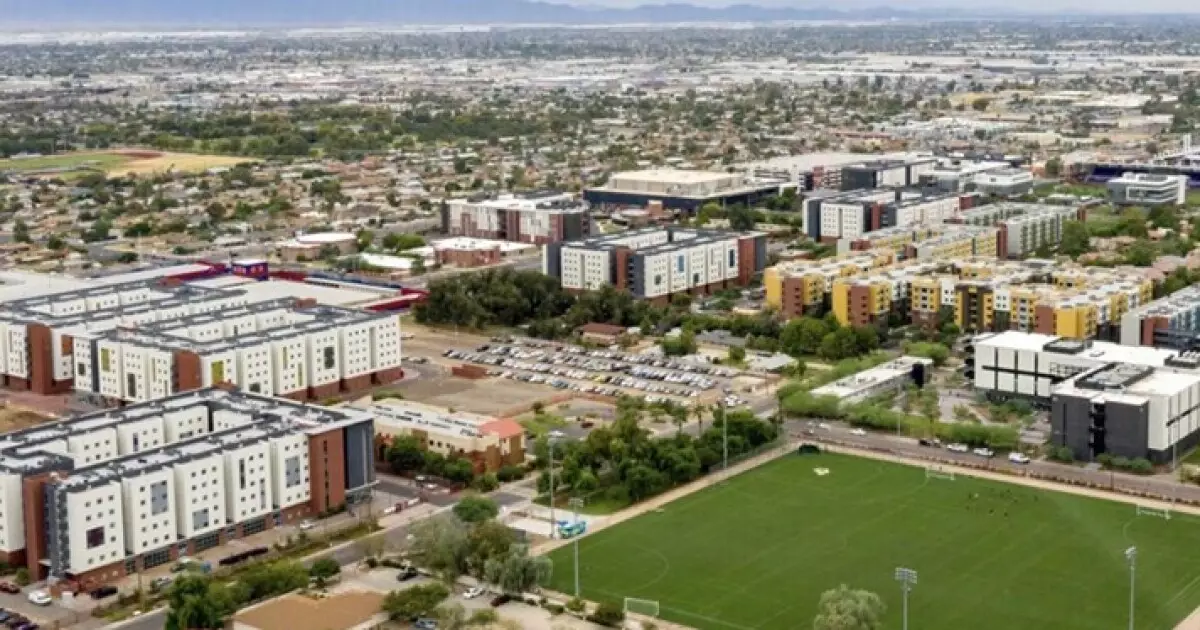Grand Canyon University (GCU), a prominent Christian institution based in Phoenix, finds itself at a crucial juncture in its financial journey. This week, the university is set to embark on a significant municipal market operation, presenting a $520 million deal aimed at refunding cash-collateralized loans and addressing maturing obligations. In a climate where educational institutions face increasing scrutiny and regulatory challenges, this move represents both an opportunity and a risk for GCU’s financial health.
The financial strategy involves the issuance of taxable revenue bonds facilitated through the Maricopa County Industrial Development Authority, with Goldman Sachs acting as the sole underwriter. This bond issuance is not merely a refinancing activity; it seeks to consolidate existing debts incurred under previous bond sales, specifically the 2021B Series bonds that have been maturing since October 1 of this year. The proactive approach to refinancing, especially in terms of addressing a $500 million pool of debts, reveals GCU’s ambition to stabilize its financial foundation amidst ongoing challenges.
Significant to this strategy is the structural makeup of GCU’s debt. The proceeds from the bond issuance are intended not only to pay off existing loans but also to alleviate the financial burdens tied to capital expenditure lines of credit previously secured from UMB Bank. This indicates a forward-looking plan, which is vital for an institution that has experienced ups and downs in terms of liquidity and financial positioning.
A cloud of regulatory scrutiny looms large over GCU. In recent years, the university has faced a host of legal battles, most notably involving the U.S. Department of Education regarding its tax-exempt status. This status is critical for universities seeking federal aid funds, particularly Title IV programs, which help support student financial assistance. Compounding this complexity, a federal investigation into GCU’s tuition costs has led to a hefty $37.7 million fine, which GCU is currently contesting. These ongoing confrontations raise alarms about the long-term viability of GCU’s financial model if it fails to navigate the regulatory landscape successfully.
Accumulating a speculative-grade rating from Moody’s and a low investment-grade rating from Fitch Ratings emphasizes GCU’s current precarious financial standing. The negative outlook from Moody’s reflects heightened concerns regarding regulatory risks, and this creates a tension between GCU’s ambitious growth and its immediate financial stability.
One critical aspect underpinning GCU’s financial strategy is its enrollment statistics, which reveal promising upward trends. As of September 30, the institution reported an enrollment of 123,002 students—an increase from the previous year’s 118,227. Notably, GCU’s capacity to engage both in-person students and a substantial online learner demographic serves as a potential buffer against financial instability. Moody’s highlighted that effective enrollment management across these diverse education platforms is key to ensuring debt coverage and financial sustainability.
This trend could imply a solid revenue stream that supports GCU’s operational expenses alongside its debt obligations, positioning the university favorably against its competitors in the higher education sector. As the demand for online education continues to swell, GCU could capitalize on this niche, enhancing its income levels and stability.
Looking ahead, Grand Canyon University appears poised for an experimental financial transformation through continued refinancing. As noted, the university plans to regularly amortize a significant portion of its outstanding bonds, emphasizing a disciplined approach to debt management. However, looming regulatory threats and eligibility for federal funds remain critical hurdles that could impede this trajectory.
Additionally, GCU’s legal entanglements, including litigations involving the Federal Trade Commission, further complicate the institution’s path. Without resolving these issues satisfactorily, the university’s financial flexibility may erode, hindering its overall growth potential.
Grand Canyon University is navigating uncharted waters amid a complex interplay of financial ambition, regulatory scrutiny, and enrollment scalability. As it approaches refinancing with strategic intent, the unfolding narrative will depend not only on sound financial management but also on the university’s ability to navigate regulatory landscapes that have previously dictated its operational latitude. Thus, the overarching question remains: can GCU sustain its growth amidst regulatory hurdles while ensuring robust financial health? Only time will tell whether this $520 million initiative truly serves as a stepping stone or a stumbling block in its journey ahead.


Leave a Reply